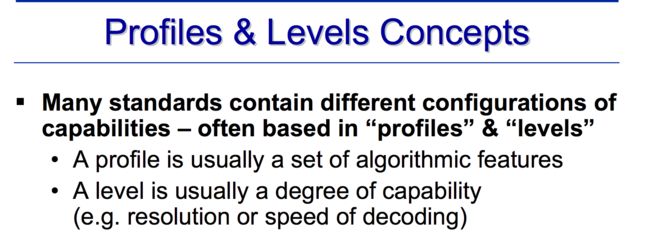- Solidity——什么是低级调用(low-level calls)和操作码的内联汇编
这是Solidity高级开发中很重要的两个概念,通常用于:精细控制合约行为(比如合约间通信、控制gas、避免fallback限制)编写高性能或底层逻辑的合约(例如代理合约、MEV、Gas优化等)我们逐一讲清楚:✅一、什么是低级调用(Low-levelcalls)Solidity提供了几种**“低级”函数调用方式**,用于替代标准的函数调用。这些函数更原始、更灵活,但使用不当容易出bug(比如失败不
- uniapp - 解决苹果ios真机运行报错:错误:请查看是否设备未加入到证书列表或者确认证书类型是否匹配(HbuilderX运行IOS手机出现问题,uniapp运行到IOS真机提示请查看是否设备未)
王二红
+UniApp+Uniapp开发问题汇总uni-app运行到IOS真机提示错误请查苹果app平台端ios苹果真机调试运行失败书列表或者确认证书类型是否匹配UDID没有任何问题还是提示添加手机设备UUID
前言网上的教程都无法解决问题,本文提供强力解决方案。在uni-appApp端(苹果APP)开发中,强力解决“错误:请查看是否设备未加入到证书列表或者确认证书类型是否匹配”,如何解决hbuilder运行AppiOS端真机调试查看失败无法启动问题,本文解决连接失败、设备UDID已经绑定添加了还是提示这个错误(也确保了udid没有任何问题)、证书profile文件也重新弄了还是不行,本文提供强大多种解决
- Python实现MCP Server的完整Demo
CATTLECODE
python开发语言
mcpserverfromfastmcpimportFastMCPimportlogging#配置日志记录logging.basicConfig(level=logging.INFO)logger=logging.getLogger(__name__)mcp=FastMCP("DemoServer")@mcp.tool()asyncdefcalculate(a:float,b:float,op:s
- HarmonyOS开发秘籍:从监听系统变量到掌握AbilityStage回调
大雨淅淅
#HarmonyOS开发harmonyos华为
目录一、HarmonyOS开发新视野二、AbilityStage组件初相识(一)组件定义与作用(二)与Module的对应关系三、开发前的准备工作(一)创建AbilityStage文件步骤(二)导入依赖与配置文件四、监听系统环境变量变化实战(一)关键代码解析(二)回调函数触发机制五、AbilityStage其他回调函数探秘(一)onAcceptWant()(二)onMemoryLevel()(三)o
- 鸿蒙(HarmonyOS)性能优化实战-启动分析工具Launch Profiler 学习指南
愿天堂没有996
HarmonyOS鸿蒙开发移动开发harmonyos性能优化HarmonyOSOpenHarmony移动开发
LaunchProfiler概述DevEcoStudio内置Profiler分析调优工具。其中Launch主要用于分析应用或服务的启动耗时,分析启动周期各阶段的耗时情况、核心线程的运行情况等,协助开发者识别启动缓慢的原因。此外,Launch任务窗口还集成了Time、CPU、Frame场景分析任务的功能,方便开发者在分析启动耗时的过程中同步对比同一时段的其他资源占用情况。场景示例如下代码在页面绘制之
- .NET9 实现 JSON 序列化和反序列化(Newtonsoft.Json & System.Text.Json)性能测试
为了在.NET9平台上对比Newtonsoft.Json和System.Text.Json的序列化与反序列化的性能,我们可以使用BenchmarkDotNet来进行压测。目录1.项目准备2.基准测试环境3.性能对比a.对象级别的序列化(Object-LevelSerialization)b.对象级别的反序列化(Object-LevelDeserialization)c.API响应级别的序列化(Ap
- 一秒四次!高频Tick五档期货Level2分析
一秒四次!高频Tick五档期货Level2分析国内期货level2高频数据(一秒四次)下载链接:https://pan.baidu.com/s/144ewl4T0dQvrAedhLz8uJw?pwd=c33h提取码:c33h通过历史Level2一秒四次高频数据深层次分析交易可以分析出比较活跃的品种一:m2505(1)在11:12:36.158的瞬间,一笔引人注目的大单投入市场,3606份订单被安排
- 破解FPS主线程阻塞的终极方案
你一身傲骨怎能输
FPS射击游戏高级技术专栏性能优化
文章摘要FPS游戏中主线程等待其他线程(如物理、AI等)会引发性能瓶颈,导致帧率下降和卡顿。常见原因包括同步点过多、任务分配不均、锁滥用和数据依赖过强。优化方法包括:1)减少硬等待,采用异步处理;2)任务分解和负载均衡;3)使用无锁同步;4)流水线分阶段处理;5)设置超时降级策略。引擎层面可利用Unity的JobSystem或Unreal的TaskGraph系统进行优化。关键是通过Profiler
- ThinkPHP中的日志通道配置
深山技术宅
PHP经验ThinkPHPphp后端日志
在ThinkPHP中配置日志通道主要通过config/log.php文件实现。以下是详细配置说明和示例:1.基础配置结构//config/log.phpreturn['default'=>'file',//默认使用的通道'channels'=>[//通道1:文件日志(默认)'file'=>['type'=>'file','path'=>runtime_path('log'),'level'=>['
- Linux系统学习:文件、目录操作,简单语法
橙小花
linux学习
DAY2文件系统Linux本质上就是一个文件系统。Linux文件系统是操作系统组织、存取、保存数据的一种手段。整体采用层级式的倒状目录结构。倒状树结构中的目录/:根目录/bin:主要存放系统普通指令/boot:主要存放系统的引导程序/dev:存放硬件设备对应的文件(Linux应用开发阶段,访问其中的文件)/etc:存放系统和应用程序的配置文件(如:profile)/home:家目录,存放当前系统下
- Python——pyautogui打地鼠游戏自动化脚本(基于图片定位)
以4399小游戏为例:4399游戏网importpyautoguiimportkeyboardimporttimeimportrandomimportloggingfromPILimportImageGrabimportos#配置日志logging.basicConfig(level=logging.INFO,format='%(asctime)s-%(levelname)s-%(message)
- ARMv8 创建3级页表示例
liuluyang530
FPGA验证ARMv8armv8页表mmu
最近在研究armv8页表创建过程,顺带做了一个如下形式的页表,//level1table,4entries://00000000-3FFFFFFF,1GBblock,DDR//40000000-7FFFFFFF,1GBblock,DDR//80000000-BFFFFFFF,1GBblock,DDR//C0000000-FFFFFFFF,pointtolevel2tabel////level2ta
- ARMv8 创建1、2、3级页表代码与注释
liuluyang530
armv8mmu页表
对下面的地址空间创建3级页表//level1table,4entries://00000000-3FFFFFFF,1GBblock,DDR//40000000-7FFFFFFF,1GBblock,DDR//80000000-BFFFFFFF,1GBblock,DDR//C0000000-FFFFFFFF,pointtolevel2tabel////level2table,512entries://
- python profile_python程序之profile分析
操作系统:CentOS7.3.1611_x64python版本:2.7.5问题描述1、Python开发的程序在使用过程中很慢,想确定下是哪段代码比较慢;2、Python开发的程序在使用过程中占用内存很大,想确定下是哪段代码引起的;解决方案使用profile分析分析cpu使用情况可以使用profile和cProfile对python程序进行分析,这里主要记录下cProfile的使用,profile参
- Python知识点:如何使用memory_profiler进行内存分析
开篇,先说一个好消息,截止到2025年1月1日前,翻到文末找到我,赠送定制版的开题报告和任务书,先到先得!过期不候!如何使用memory_profiler进行Python代码内存分析在开发高性能的Python应用程序时,理解和优化内存使用是至关重要的。memory_profiler是一个强大的工具,它可以帮助你监控Python代码的内存使用情况。本文将介绍如何使用memory_profiler来分
- 【Python】memory_profiler
宅男很神经
python开发语言
1.1引用计数与垃圾回收:Python的“贴身管家”与“清洁工”Python,特别是其标准实现CPython,其内存管理的核心是建立在一个优雅而高效的组合机制之上的:以引用计数为主,分代垃圾回收为辅。1.引用计数(ReferenceCounting):主要的内存管家这是CPython内存管理的基石。其原理极其简单:CPython中的每一个对象(一个整数、一个列表、一个自定义类的实例),其内部都维护
- Unreal Engine开发:高级渲染技术_4.高级着色器编程
chenlz2007
游戏开发虚幻着色器游戏引擎数据库网络rpc
4.高级着色器编程在上一节中,我们探讨了UnrealEngine中的基础渲染技术,包括光照、阴影和材质系统。本节将深入探讨高级着色器编程,帮助您掌握更复杂的渲染效果和优化技术。UnrealEngine的着色器系统是基于HLSL(High-LevelShadingLanguage)和USF(UnrealShaderFormat)的,这两种语言允许开发者编写高效的着色器代码,以实现各种视觉效果。4.1
- 七、性能优化
瓜子三百克
Flutter性能优化flutter
目录1.如何检测Flutter应用的性能问题?2.什么是重绘边界(RepaintBoundary)?3.如何避免不必要的重建?4.`const`构造函数在优化中起什么作用?5.如何优化长列表的性能?6.如何减少应用启动时间?1.如何检测Flutter应用的性能问题?核心工具:工具用途使用方式DevTools性能面板分析UI渲染时间、GPU耗时、CPU耗时flutterrun--profile→da
- 从零开始写一个RTSP服务器(五)RTP传输AAC
从零开始写一个RTSP服务器系列★我的开源项目-RtspServer从零开始写一个RTSP服务器(一)RTSP协议讲解从零开始写一个RTSP服务器(二)RTSP协议的实现从零开始写一个RTSP服务器(三)RTP传输H.264从零开始写一个RTSP服务器(四)一个传输H.264的RTSP服务器从零开始写一个RTSP服务器(五)RTP传输AAC从零开始写一个RTSP服务器(六)一个传输AAC的RTSP
- \SpringBootDemo-1.0-SNAPSHOT.jar中没有主清单属性
郭宝
JavaEE#SpringBootjarmavenjava
背景:java-jar.\SpringBootDemo-1.0-SNAPSHOT.jar--spring.profiles.active=dev在运行打包以后的maven项目时,出现了如下报错信息解决办法:1、需要在项目根目录下的pom.xml文件中添加SpringBoot构建的插件org.springframework.bootspring-boot-maven-pluginrepackage<
- ISP(图像信号处理)算法概述、工作原理、架构、处理流程
全栈_xap
接口隔离原则信号处理算法
而DSP功能就比较多了,它可以做些拍照以及回显(JPEG的编解码)、录像以及回放(Video的编解码)、H.264的编解码、还有很多其他方面的处理,总之是处理数字信号了。ISP是一类特殊的处理图像信号的DSP。ISP架构方案:分为独立****(外置)与集成********(内置)****两种形式。CPU处理器包括:AP、BP、CP。其中BP****:基带处理器、AP:应用处理器、CP:****多媒
- win11报错user profile service完美解决方式
1.问题描述windows11启动后报错userprofileservice,输入用户密码登录后大部分文件、软件消失2.问题原因触犯这个报错的原因是没有关闭软件直接进行强制关机后导致3.解决方式1.使用win+R快捷键,然后输入msconfig然后回车键2.进入到系统配置窗口3.按下图勾选后重启,这里第一次进入的启动选择默认是正常启动4.重启之后就和报错userprofileservice之前一样
- pycharm 日志文件提示“该文件以错误的编码加载:‘UTF-8‘“且乱码
%Leo
开发pycharmidepython
原因:配置日志的时候没有指定编码方式,添加“encoding='utf-8'”#配置日志logging.basicConfig(level=logging.INFO,#设置日志级别:DEBUG,INFO,WARNING,ERROR,CRITICALformat='%(asctime)s[%(levelname)s][Line:%(lineno)d]%(message)s',#日志格式:时间[级别]
- Linux下安装Java运行环境
等木鱼的猫
javalinux服务器jdk
1.linux下载包解压yum-yinstallwgetwgethttps://repo.huaweicloud.com/java/jdk/8u201-b09/jdk-8u201-linux-x64.tar.gztar-zxvfjdk-8u201-linux-x64.tar.gzmvjdk1.8.0_201/usr/local/jdk1.8/2.配置环境变量vi/etc/profile#增加以下内
- ibm gdc和gdl_在GDC夏季交流和学习
ibmgdc和gdlLevelupyourartistskillsandnetworkwithUnityexpertsduringGameDeveloperConferenceSummer(GDCSummer),takingplaceonlineAugust4–6,2020.在2020年8月4日至6日在线举行的夏季游戏开发者大会(GDC夏季)期间,与Unity专家一起提高您的艺术家技能和网络联系。
- CppCon 2018 学习:RAPID PROTOTYPING OF GRAPHICS SHADERS IN
虾球xz
CppCon学习c++开发语言
这段内容在讲**着色器(Shader)**的基础概念,尤其是它在现代GPU(图形处理单元)中的作用。以下是逐条解释与理解:“Depictingdepthperceptionin3Dmodelsorillustrationsbyvaryinglevelsofdarkness”—Wikipedia这是**光照/阴影(shading)**的定义,来自维基百科。意思是:为了在二维图像中表现三维感,我们通过
- 移动开发:WebView的性能优化工具推荐与使用
移动开发:WebView的性能优化工具推荐与使用关键词:WebView、性能优化、移动开发、渲染性能、内存管理、调试工具、缓存策略摘要:本文深入探讨移动开发中WebView的性能优化策略和工具。我们将从WebView的核心原理出发,分析其性能瓶颈,介绍一系列实用的性能优化工具和技术,包括ChromeDevTools、AndroidProfiler、Systrace等。文章还将提供详细的代码示例和优
- 【集成学习】Bagging、Boosting、Stacking算法详解
文章目录1.相关算法详解:2.算法详细解释:2.1Bagging:2.2Boosting:2.3Stacking:2.4K-foldMulti-levelStacking:集成学习(EnsembleLearning)是一种通过结合多个模型的预测结果来提高整体预测性能的技术。它通过将多个学习器的结果集成起来,使得最终的模型性能更强,具有更好的泛化能力。常见的集成学习框架包括:Bagging、Boos
- 面向智能医疗的6G物联网和人工智能
Allen_Lyb
医疗高效编程研发物联网人工智能健康医疗
AbstractTheconvergenceof6Gwirelesstechnology,theInternetofThings(IoT),andArtificialIntelligence(AI)ispoisedtorevolutionizehealthcaredeliverybyenablingunprecedentedlevelsofconnectivity,intelligence,and
- 【亲测可行】linux安装miniforge & miniconda无痛迁移到miniforge
computer_vision_chen
嵌入式人工智能linuxminicondaanacondaminiforge
文章目录为什么要使用miniforge?完全卸载miniconda备份miniconda3修改本用户的环境变量修改本用户的环境变量删除~/.condarc和mv~/.condalinux下载安装miniforge配置全局变量/etc/profile配置用户变量~/.bashrc将miniconda3的虚拟环境迁移到miniforge3迁移到miniforge后pip无法使用参考内容miniforg
- scala的option和some
矮蛋蛋
编程scala
原文地址:
http://blog.sina.com.cn/s/blog_68af3f090100qkt8.html
对于学习 Scala 的 Java™ 开发人员来说,对象是一个比较自然、简单的入口点。在 本系列 前几期文章中,我介绍了 Scala 中一些面向对象的编程方法,这些方法实际上与 Java 编程的区别不是很大。我还向您展示了 Scala 如何重新应用传统的面向对象概念,找到其缺点
- NullPointerException
Cb123456
androidBaseAdapter
java.lang.NullPointerException: Attempt to invoke virtual method 'int android.view.View.getImportantForAccessibility()' on a null object reference
出现以上异常.然后就在baidu上
- PHP使用文件和目录
天子之骄
php文件和目录读取和写入php验证文件php锁定文件
PHP使用文件和目录
1.使用include()包含文件
(1):使用include()从一个被包含文档返回一个值
(2):在控制结构中使用include()
include_once()函数需要一个包含文件的路径,此外,第一次调用它的情况和include()一样,如果在脚本执行中再次对同一个文件调用,那么这个文件不会再次包含。
在php.ini文件中设置
- SQL SELECT DISTINCT 语句
何必如此
sql
SELECT DISTINCT 语句用于返回唯一不同的值。
SQL SELECT DISTINCT 语句
在表中,一个列可能会包含多个重复值,有时您也许希望仅仅列出不同(distinct)的值。
DISTINCT 关键词用于返回唯一不同的值。
SQL SELECT DISTINCT 语法
SELECT DISTINCT column_name,column_name
F
- java冒泡排序
3213213333332132
java冒泡排序
package com.algorithm;
/**
* @Description 冒泡
* @author FuJianyong
* 2015-1-22上午09:58:39
*/
public class MaoPao {
public static void main(String[] args) {
int[] mao = {17,50,26,18,9,10
- struts2.18 +json,struts2-json-plugin-2.1.8.1.jar配置及问题!
7454103
DAOspringAjaxjsonqq
struts2.18 出来有段时间了! (貌似是 稳定版)
闲时研究下下! 貌似 sruts2 搭配 json 做 ajax 很吃香!
实践了下下! 不当之处请绕过! 呵呵
网上一大堆 struts2+json 不过大多的json 插件 都是 jsonplugin.34.jar
strut
- struts2 数据标签说明
darkranger
jspbeanstrutsservletScheme
数据标签主要用于提供各种数据访问相关的功能,包括显示一个Action里的属性,以及生成国际化输出等功能
数据标签主要包括:
action :该标签用于在JSP页面中直接调用一个Action,通过指定executeResult参数,还可将该Action的处理结果包含到本页面来。
bean :该标签用于创建一个javabean实例。如果指定了id属性,则可以将创建的javabean实例放入Sta
- 链表.简单的链表节点构建
aijuans
编程技巧
/*编程环境WIN-TC*/ #include "stdio.h" #include "conio.h"
#define NODE(name, key_word, help) \ Node name[1]={{NULL, NULL, NULL, key_word, help}}
typedef struct node { &nbs
- tomcat下jndi的三种配置方式
avords
tomcat
jndi(Java Naming and Directory Interface,Java命名和目录接口)是一组在Java应用中访问命名和目录服务的API。命名服务将名称和对象联系起来,使得我们可以用名称
访问对象。目录服务是一种命名服务,在这种服务里,对象不但有名称,还有属性。
tomcat配置
- 关于敏捷的一些想法
houxinyou
敏捷
从网上看到这样一句话:“敏捷开发的最重要目标就是:满足用户多变的需求,说白了就是最大程度的让客户满意。”
感觉表达的不太清楚。
感觉容易被人误解的地方主要在“用户多变的需求”上。
第一种多变,实际上就是没有从根本上了解了用户的需求。用户的需求实际是稳定的,只是比较多,也比较混乱,用户一般只能了解自己的那一小部分,所以没有用户能清楚的表达出整体需求。而由于各种条件的,用户表达自己那一部分时也有
- 富养还是穷养,决定孩子的一生
bijian1013
教育人生
是什么决定孩子未来物质能否丰盛?为什么说寒门很难出贵子,三代才能出贵族?真的是父母必须有钱,才能大概率保证孩子未来富有吗?-----作者:@李雪爱与自由
事实并非由物质决定,而是由心灵决定。一朋友富有而且修养气质很好,兄弟姐妹也都如此。她的童年时代,物质上大家都很贫乏,但妈妈总是保持生活中的美感,时不时给孩子们带回一些美好小玩意,从来不对孩子传递生活艰辛、金钱来之不易、要懂得珍惜
- oracle 日期时间格式转化
征客丶
oracle
oracle 系统时间有 SYSDATE 与 SYSTIMESTAMP;
SYSDATE:不支持毫秒,取的是系统时间;
SYSTIMESTAMP:支持毫秒,日期,时间是给时区转换的,秒和毫秒是取的系统的。
日期转字符窜:
一、不取毫秒:
TO_CHAR(SYSDATE, 'YYYY-MM-DD HH24:MI:SS')
简要说明,
YYYY 年
MM 月
- 【Scala六】分析Spark源代码总结的Scala语法四
bit1129
scala
1. apply语法
FileShuffleBlockManager中定义的类ShuffleFileGroup,定义:
private class ShuffleFileGroup(val shuffleId: Int, val fileId: Int, val files: Array[File]) {
...
def apply(bucketId
- Erlang中有意思的bug
bookjovi
erlang
代码中常有一些很搞笑的bug,如下面的一行代码被调用两次(Erlang beam)
commit f667e4a47b07b07ed035073b94d699ff5fe0ba9b
Author: Jovi Zhang <
[email protected]>
Date: Fri Dec 2 16:19:22 2011 +0100
erts:
- 移位打印10进制数转16进制-2008-08-18
ljy325
java基础
/**
* Description 移位打印10进制的16进制形式
* Creation Date 15-08-2008 9:00
* @author 卢俊宇
* @version 1.0
*
*/
public class PrintHex {
// 备选字符
static final char di
- 读《研磨设计模式》-代码笔记-组合模式
bylijinnan
java设计模式
声明: 本文只为方便我个人查阅和理解,详细的分析以及源代码请移步 原作者的博客http://chjavach.iteye.com/
import java.util.ArrayList;
import java.util.List;
abstract class Component {
public abstract void printStruct(Str
- 利用cmd命令将.class文件打包成jar
chenyu19891124
cmdjar
cmd命令打jar是如下实现:
在运行里输入cmd,利用cmd命令进入到本地的工作盘符。(如我的是D盘下的文件有此路径 D:\workspace\prpall\WEB-INF\classes)
现在是想把D:\workspace\prpall\WEB-INF\classes路径下所有的文件打包成prpall.jar。然后继续如下操作:
cd D: 回车
cd workspace/prpal
- [原创]JWFD v0.96 工作流系统二次开发包 for Eclipse 简要说明
comsci
eclipse设计模式算法工作swing
JWFD v0.96 工作流系统二次开发包 for Eclipse 简要说明
&nb
- SecureCRT右键粘贴的设置
daizj
secureCRT右键粘贴
一般都习惯鼠标右键自动粘贴的功能,对于SecureCRT6.7.5 ,这个功能也已经是默认配置了。
老版本的SecureCRT其实也有这个功能,只是不是默认设置,很多人不知道罢了。
菜单:
Options->Global Options ...->Terminal
右边有个Mouse的选项块。
Copy on Select
Paste on Right/Middle
- Linux 软链接和硬链接
dongwei_6688
linux
1.Linux链接概念Linux链接分两种,一种被称为硬链接(Hard Link),另一种被称为符号链接(Symbolic Link)。默认情况下,ln命令产生硬链接。
【硬连接】硬连接指通过索引节点来进行连接。在Linux的文件系统中,保存在磁盘分区中的文件不管是什么类型都给它分配一个编号,称为索引节点号(Inode Index)。在Linux中,多个文件名指向同一索引节点是存在的。一般这种连
- DIV底部自适应
dcj3sjt126com
JavaScript
<!DOCTYPE html PUBLIC "-//W3C//DTD XHTML 1.0 Transitional//EN" "http://www.w3.org/TR/xhtml1/DTD/xhtml1-transitional.dtd">
<html xmlns="http://www.w3.org/1999/xhtml&q
- Centos6.5使用yum安装mysql——快速上手必备
dcj3sjt126com
mysql
第1步、yum安装mysql
[root@stonex ~]# yum -y install mysql-server
安装结果:
Installed:
mysql-server.x86_64 0:5.1.73-3.el6_5 &nb
- 如何调试JDK源码
frank1234
jdk
相信各位小伙伴们跟我一样,想通过JDK源码来学习Java,比如collections包,java.util.concurrent包。
可惜的是sun提供的jdk并不能查看运行中的局部变量,需要重新编译一下rt.jar。
下面是编译jdk的具体步骤:
1.把C:\java\jdk1.6.0_26\sr
- Maximal Rectangle
hcx2013
max
Given a 2D binary matrix filled with 0's and 1's, find the largest rectangle containing all ones and return its area.
public class Solution {
public int maximalRectangle(char[][] matrix)
- Spring MVC测试框架详解——服务端测试
jinnianshilongnian
spring mvc test
随着RESTful Web Service的流行,测试对外的Service是否满足期望也变的必要的。从Spring 3.2开始Spring了Spring Web测试框架,如果版本低于3.2,请使用spring-test-mvc项目(合并到spring3.2中了)。
Spring MVC测试框架提供了对服务器端和客户端(基于RestTemplate的客户端)提供了支持。
&nbs
- Linux64位操作系统(CentOS6.6)上如何编译hadoop2.4.0
liyong0802
hadoop
一、准备编译软件
1.在官网下载jdk1.7、maven3.2.1、ant1.9.4,解压设置好环境变量就可以用。
环境变量设置如下:
(1)执行vim /etc/profile
(2)在文件尾部加入:
export JAVA_HOME=/home/spark/jdk1.7
export MAVEN_HOME=/ho
- StatusBar 字体白色
pangyulei
status
[[UIApplication sharedApplication] setStatusBarStyle:UIStatusBarStyleLightContent];
/*you'll also need to set UIViewControllerBasedStatusBarAppearance to NO in the plist file if you use this method
- 如何分析Java虚拟机死锁
sesame
javathreadoracle虚拟机jdbc
英文资料:
Thread Dump and Concurrency Locks
Thread dumps are very useful for diagnosing synchronization related problems such as deadlocks on object monitors. Ctrl-\ on Solaris/Linux or Ctrl-B
- 位运算简介及实用技巧(一):基础篇
tw_wangzhengquan
位运算
http://www.matrix67.com/blog/archives/263
去年年底写的关于位运算的日志是这个Blog里少数大受欢迎的文章之一,很多人都希望我能不断完善那篇文章。后来我看到了不少其它的资料,学习到了更多关于位运算的知识,有了重新整理位运算技巧的想法。从今天起我就开始写这一系列位运算讲解文章,与其说是原来那篇文章的follow-up,不如说是一个r
- jsearch的索引文件结构
yangshangchuan
搜索引擎jsearch全文检索信息检索word分词
jsearch是一个高性能的全文检索工具包,基于倒排索引,基于java8,类似于lucene,但更轻量级。
jsearch的索引文件结构定义如下:
1、一个词的索引由=分割的三部分组成: 第一部分是词 第二部分是这个词在多少
